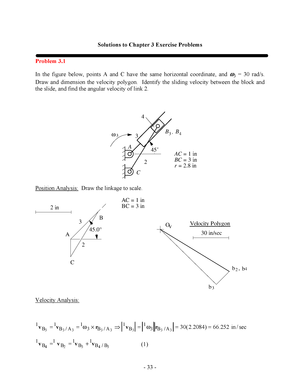

Elastic bodies or structural mechanics are calculated by FEM/FEA This is made possible by using the module Using MBD programs (multi-body dynamics). Non-linear analysis of a snap hook that is analyzed, taking into account contact and largeĪs mentioned several times, mechanical problems can be structured in four fields: rigidīodies, elastic bodies, fluids and electrical bodies. Using NX Nastran solution method Sol 106.įinally, NX Nastran’s solution method Sol 601 is explained in the context of an advanced “large deformations” (Section 4.3.1) and “non-linear material behavior” (Section 4.3.2) by Learning examples regarding basic non-linear analysis describe the non-linear effects However, since this simplified contact function (Solġ01) is associated with the solution method for linear statics, it will be displayed and used The fourth example (Section 4.2.4) finally shows the contact feature, strictly speaking this In theįirst example (Section 4.2.1) shell elements are used, in the second example (Section 4.2.2)īeam elements are used and in the third example (Section 4.2.3) mass points are used. In the learning examples for linear analysis, complex meshes are discussed first. All learning tasks are derived from the context of the RAK2 In SectionĤ.2 to 4.4, learning tasks follow dealing with the topics linear, basic non-linear andĪdvanced non-linear analysis. You will learn how they work, what they can del iver, and what their limits are. In Section 4.1, Nastran solution methods are described which are used in later examples. However,įurther a ssumptions on prior knowledge do not exist. These basics are therefore not repeated in this chapter. The CAE file structure and many basic functions are the same as in Pre/ Working through Chapter 3 (at least the review of the first example) is recommended because Taught in Chapter 3 for module Design Simulation. In addition, basic knowledge should exist in the field of linear FEM, just as it is Users of Simcenter Pre/Post (FEM) should be familiar using 3D design ofĬomponents and simple assemblies in the Simcenter 3D system. The conclusion is Chapter 6 which deals with electromagnetic simulation. We deal with the CFD portion comprising flow and complex thermal problems. This chapter describes the part of the Pre/Post module that works with FEM. To analyze more complex geometry than in the module Design Simulation because manyįunctions exist for geometry preparation, mesh control and coupling of meshes. For example, classical non-linearities like contact, non-linear material and large deformation can be calculated here, as well as specialĪreas such as crash, metal forming or laminate analysis. On the one hand, the predictable physical phenomena go far beyond linear FEM. The module Pre/Post allows analysis engineers or interested design engineers in the FEMįield the simulation of complex mechanical effects. Stands for a preprocessor or postprocessor environment that can be combined with different solvers to simulate different physical effects. The also often mentioned module Advanced Simulation hasīeen renamed to Pre/Post application with the release of NX11.

The NX simulation environment, formerly known as NX CAE, is now an individual new


 0 kommentar(er)
0 kommentar(er)
